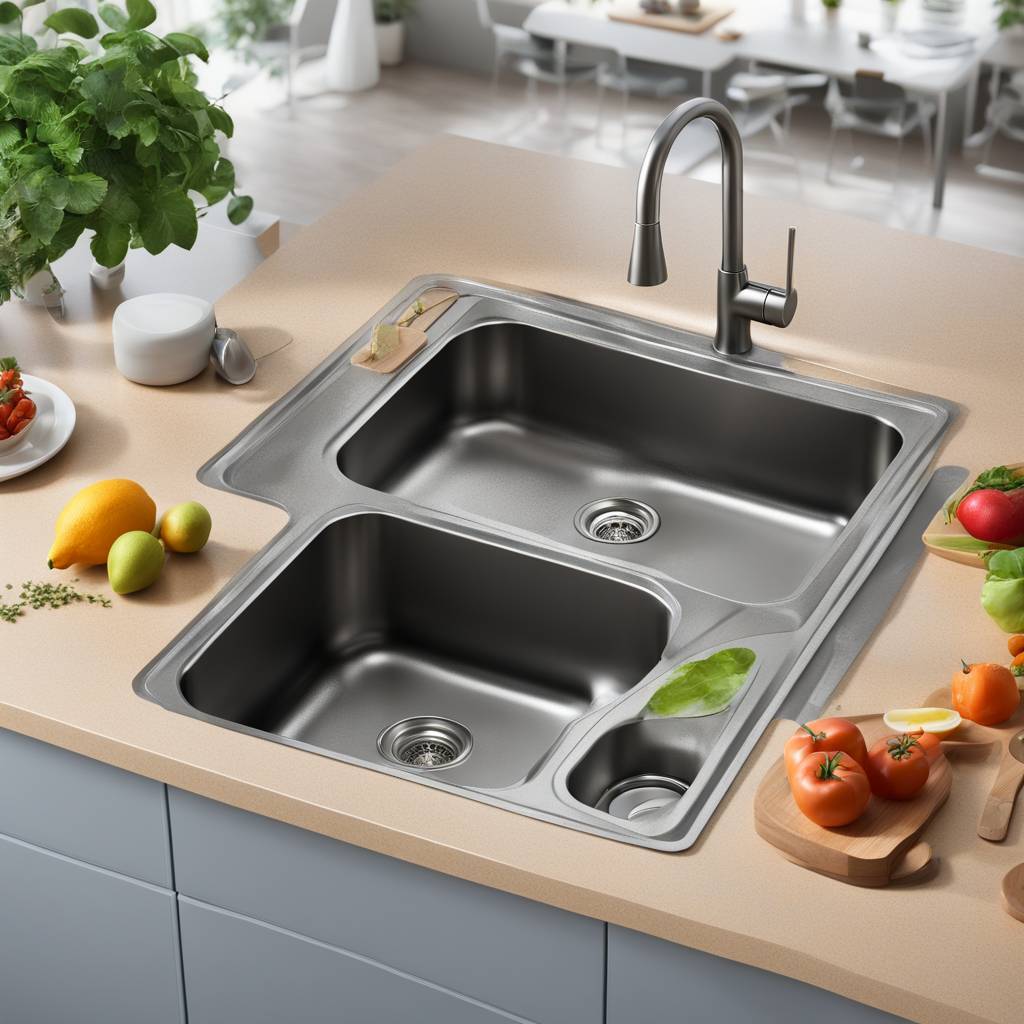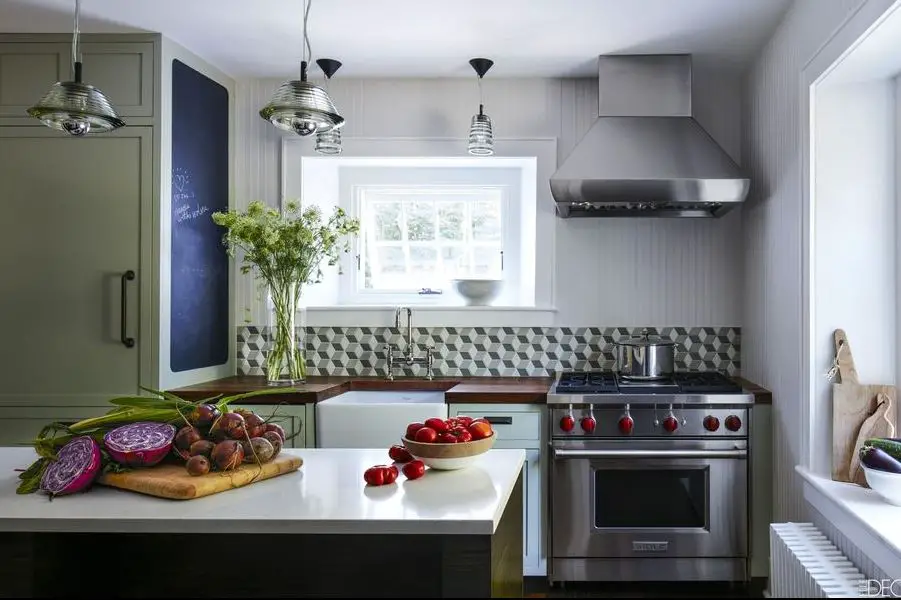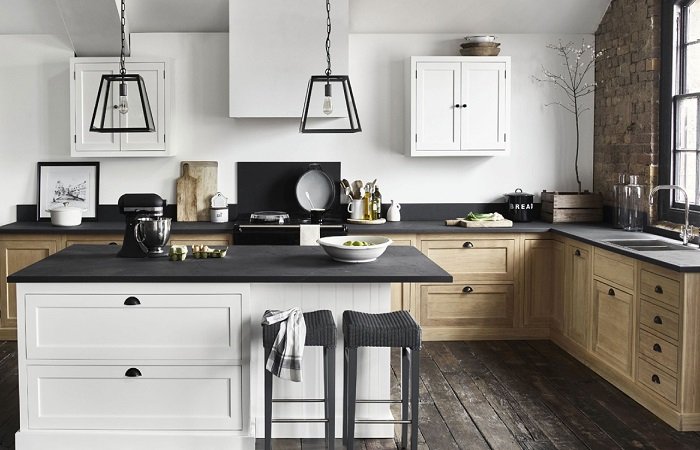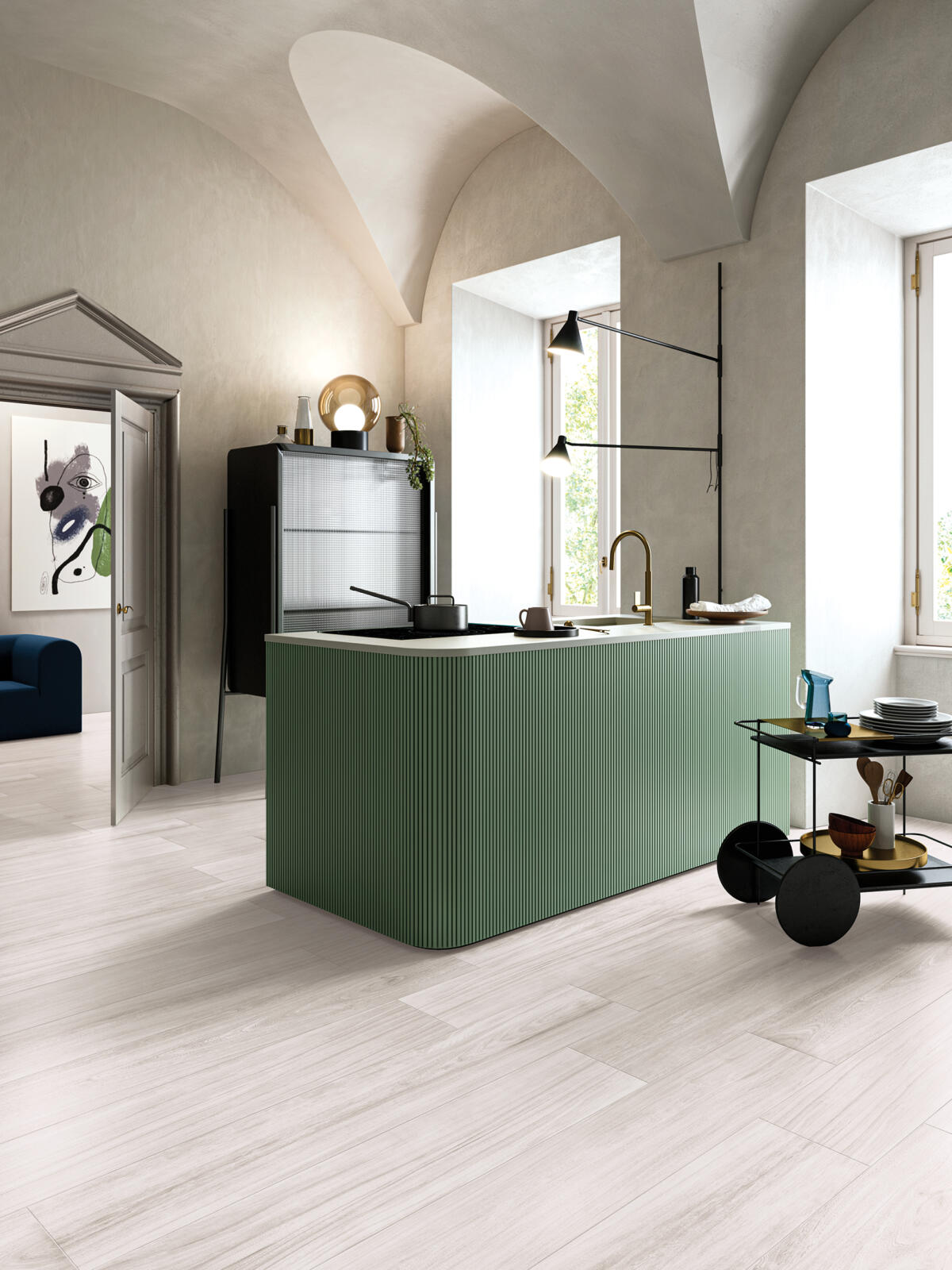Tired of constantly scrubbing your kitchen sink? Say goodbye to endless cleaning with these low-maintenance kitchen sink designs. From sleek stainless steel to durable granite composite, we’ve got the rundown on the latest hassle-free options for your kitchen. No more worrying about scratches, stains, or water spots – these sinks are built to withstand it all. Whether you’re a busy parent or a cooking enthusiast, these designs will make your life easier with low maintenance and keep your kitchen looking pristine with regular cleaning.
Discover how modern technology and innovative materials, such as durability, have revolutionized the way we think about kitchen sinks. We’ll explore the history behind these developments and provide practical tips for choosing the perfect low-maintenance sink for your home. Get ready to upgrade your kitchen without adding extra chores to your daily routine.
Key Takeaways
- Choose stainless steel, quartz, or fireclay materials for low-maintenance kitchen sinks.
- Opt for undermount or flush-mount sink designs to simplify cleaning and maintenance.
- Coordinate your sink choice with easy-to-clean countertops, backsplashes, and flooring for a cohesive, low-maintenance kitchen.
- Select kitchen appliances with easy-to-clean surfaces and minimal maintenance requirements to streamline kitchen upkeep.
- Regularly clean and maintain your kitchen sink by using gentle cleaners, avoiding abrasive materials, and addressing issues promptly.
- Consider your lifestyle, cooking habits, and family size when selecting a kitchen sink to ensure it suits your needs.
Exploring Low-Maintenance Sink Designs
Considering the durability and cost of different materials is crucial. Stainless steel sinks are resistant to corrosion and heat, making them durable options. However, they can show water spots more easily than other materials.
On the other hand, composite granite sinks are highly durable and scratch-resistant, ideal for withstanding daily wear and tear in a busy kitchen. Nevertheless, these sinks may require periodic sealing and care to maintain their quality over time.
Another popular option is the fireclay sink, known for its stain-resistant material and easy care. However, it’s important to note that fireclay can chip with heavy impact, so careful handling is necessary.
In terms of stain resistance, non-porous materials like quartz and solid surface sinks stand out due to their high resistance against staining agents such as coffee or wine spills. Choosing sink materials with a protective finish helps resist stains from food particles or liquids that come into contact with the sink surface.
Moreover, considering darker-colored sinks in material and style could be beneficial in minimizing the appearance of stains over time. This color choice can help maintain the aesthetic appeal of your kitchen while requiring less frequent cleaning compared to lighter-colored options.
When selecting a low-maintenance kitchen sink design with hygiene in mind, prioritizing certain features becomes essential. Opting for materials such as copper or bronze provides an added advantage due to their natural antimicrobial properties. These material properties inhibit bacterial growth on the sink’s surface without requiring additional upkeep.
Seamless sink designs, made from a hygienic material, play a key role in maintaining hygiene standards within your kitchen space by preventing bacteria buildup in crevices or hard-to-reach areas around the edges of traditional drop-in style sinks.
Furthermore, giving preference to easy-to-clean materials like stainless steel ensures that regular maintenance tasks do not become cumbersome when striving for optimal cleanliness levels in your kitchen environment.
For mold prevention purposes within your low-maintenance kitchen space, choosing non-porous materials such as quartz or solid surface becomes imperative due to their inherent ability to discourage mold growth effectively. Ensuring proper installation techniques along with adequate sealing around the perimeter of your chosen sink material significantly reduces moisture accumulation underneath the sink area where mold tends to thrive if left unattended.
Moreover, regularly cleaning and drying this area prevents any lingering moisture from contributing towards mold formation over time.
Best Materials for Easy Maintenance
Stainless Steel
Stainless steel sinks are a popular choice for easy maintenance and durability. They are resistant to stains, heat, and corrosion, making them durable and long-lasting.You can simply use mild dish soap and water for daily upkeep. For tougher stains or marks, a paste of baking soda and water works wonders as a gentle abrasive cleaner. It’s important to avoid using harsh chemicals that could potentially damage the finish of the sink.
When considering stainless steel sinks in your kitchen design, look into coordinating the backsplash material with the sink for a cohesive aesthetic. Opting for easy-to-clean glass or stainless steel material near the sink area is advisable. This not only enhances the visual appeal but also aligns with your goal of maintaining an effortlessly clean environment around the sink.
Non-Porous Options
Selecting non-porous materials for both your countertop and sink can significantly contribute to creating a low-maintenance kitchen space. Quartz or solid surface countertops pair exceptionally well with low-maintenance sinks due to their non-porous nature. These materials do not require sealing and are highly resistant to staining, making them ideal choices when aiming for an easy-to-clean kitchen setup.
In addition to choosing quartz or solid surface countertops, consider integrated sink options within the countertop itself. This creates a seamless surface that is effortless to maintain while providing a sleek appearance in your kitchen. Coordinate both color and texture between your chosen countertop material and low-maintenance sink material for an overall harmonious look in your kitchen design.
Sink Design for Simplified Cleaning
Easy-Clean Features
Prioritizing easy-clean features is essential. Look for sinks with rounded corners and smooth surfaces, as they are easier to wipe down and clean thoroughly. Consider opting for undermount sinks which seamlessly integrate with countertops, reducing the areas where dirt can accumulate. This design not only enhances the sleek look of your kitchen but also makes cleaning more efficient.
Furthermore, choosing a sink equipped with self-cleaning technology can significantly reduce maintenance efforts. These innovative options utilize various mechanisms to keep the sink surface clean without requiring frequent manual scrubbing or cleaning. With self-cleaning technology, you can enjoy a pristine sink surface without investing excessive time and effort in maintenance.
Functional Aesthetics
In addition to easy-clean features, focusing on functional aesthetics is crucial when selecting a low-maintenance kitchen sink design. Opt for deep, single-bowl sinks that accommodate large cookware effortlessly while minimizing splashing and spillage during use. The deeper bowl allows you to wash larger pots and pans comfortably without creating unnecessary mess around the sink area.
Moreover, consider additional features such as built-in drainboards or cutting boards that enhance the functionality of your sink area. These integrated elements provide added convenience during food preparation and cleanup activities in the kitchen while contributing to a clutter-free countertop space.
When considering aesthetic appeal alongside practicality, choose a sleek and modern design that complements your kitchen’s overall style while offering exceptional functionality. By selecting an aesthetically pleasing yet highly functional design, you can elevate the visual appeal of your kitchen space while ensuring that maintenance remains hassle-free.
Complementary Low-Maintenance Kitchen Elements
Cabinetry Solutions
The cabinetry plays a crucial role. Opt for pull-out drawers or shelves near the sink area, making cleaning supplies easily accessible. Consider cabinet organizers designed specifically for storing kitchen cleaning tools and products. Choose durable materials that can withstand exposure to moisture from the sink.
For instance, if you often deal with acidic foods in your kitchen, such as citrus fruits or vinegar-based ingredients, having easy access to cleaning supplies near the sink can be incredibly convenient. Imagine being able to quickly grab a specialized cleaner right from a pull-out drawer after cutting up lemons for a recipe in the kitchen.
Moreover, when selecting cabinetry materials, keep in mind that constant exposure to water and moisture is inevitable near the sink area. Therefore, choosing sturdy and water-resistant materials will ensure longevity and ease of maintenance for your kitchen space.
Flooring Selections
Another essential aspect of creating low-maintenance kitchen sinks is selecting appropriate flooring materials. It’s important to choose flooring options that are resistant to water damage; examples include porcelain tile or luxury vinyl planks. These materials are not only durable but also relatively easy to clean and maintain.
Imagine how much easier it would be to wipe up spills around the sink without worrying about damaging delicate flooring material like hardwood. Instead, opting for waterproof flooring ensures peace of mind even during accidental splashes or leaks around the sink area.
Furthermore, ensuring proper sealing of grout lines in tile flooring near the sink is crucial in preventing water penetration and potential damage over time. This simple step adds an extra layer of protection against moisture-related issues commonly found in kitchens.
Considering slip-resistant flooring options enhances safety in areas prone to water splashes – especially beneficial when dealing with busy meal preparations or washing dishes regularly at the kitchen sink.
The Role of Appliances in Kitchen Maintenance
Induction Cooktops
Induction cooktops are a fantastic option for low-maintenance kitchen sink designs. These modern cooktops use electromagnetic technology to heat pots and pans directly, eliminating the need for burners or grates that can trap food particles and grease. With no open flames or heating elements, induction cooktops boast a smooth surface that’s easy to clean around the sink area. Look for models with touch controls instead of knobs as they eliminate crevices where dirt can accumulate.
Pairing an induction cooktop with a low-maintenance sink creates a cohesive and practical kitchen setup. For instance, combining an easy-to-clean stainless steel sink with an induction cooktop ensures that your entire cooking space is designed for minimal upkeep. This combination not only enhances the aesthetics but also simplifies maintenance tasks, making it easier to keep your kitchen looking tidy and inviting.
Maintenance Tips for Kitchen Sinks
Routine Care
Establishing a regular cleaning routine is crucial for preserving the appearance and functionality of low-maintenance kitchen sink designs. By inspecting your sink during these cleaning sessions, you can promptly address any signs of wear or damage. This proactive approach helps prevent minor issues from escalating into larger problems that require extensive repairs.
Following the manufacturer’s guidelines for specific care instructions tailored to your chosen sink material is essential. For example, if you have a stainless steel sink, using abrasive cleaners or harsh chemicals may damage the surface. Instead, opt for gentle cleansers and non-abrasive sponges to maintain its luster without causing scratches.
Deep Cleaning Strategies
In addition to routine care, periodic deep cleaning is necessary to keep your low-maintenance kitchen sink in top condition. Utilize specialized cleaners recommended for your specific material type – such as porcelain or granite composite – to effectively remove stubborn stains and mineral deposits without compromising the integrity of the sink.
When tackling tough residues, employ soft-bristled brushes or sponges that can dislodge grime without scratching the surface. Avoid using abrasive tools like steel wool pads, as they can leave unsightly marks on certain materials like enamel-coated sinks.
For intricate or hard-to-reach areas of your low-maintenance kitchen sink, consider enlisting professional deep cleaning services. These experts possess the knowledge and equipment required to thoroughly cleanse every nook and cranny while ensuring that delicate materials remain unharmed throughout the process.
Selecting the Right Sink for Your Lifestyle
Lifestyle Considerations
When looking for low-maintenance kitchen sink designs, it’s crucial to assess your cooking habits and lifestyle needs. For instance, if you have a busy schedule and limited time for cleaning, choosing a sink material that is resistant to stains and scratches would be ideal. Stainless steel sinks are popular due to their durability and ease of maintenance. They are also resistant to heat, which makes them perfect for handling hot cookware without causing damage.
Consider the size of your household and the amount of cooking done daily. If you have a large family or frequently host gatherings where there’s heavy use of the kitchen, opting for a deeper sink with rounded corners can make cleaning easier as it prevents food particles from getting trapped in sharp edges. This design integration not only enhances the aesthetic appeal but also reduces the effort required in maintaining cleanliness.
Design Integration
Efficient space utilization is another essential aspect when selecting low-maintenance kitchen sink designs. Undermount sinks provide seamless integration with countertops, making it effortless to wipe crumbs or spills directly into the sink without any obstructions from lip edges found in drop-in sinks. This design not only streamlines cleanup but also gives your kitchen a sleek look by eliminating areas where grime can accumulate.
Moreover, incorporating accessories such as grid racks at the bottom of the sink can further reduce maintenance efforts by preventing scratches and dents caused by heavy pots and pans during everyday use. These racks keep dishes elevated from sitting in residual water, thus minimizing water spots and reducing cleaning time after every use.
The Impact of Kitchen Layout on Maintenance
Efficient Space Utilization
Efficient space utilization plays a crucial role. A well-designed sink area can make cleaning and maintenance tasks easier. For instance, a deep basin sink allows for easy washing of large pots and pans without causing splashes all over the countertop. This reduces the time and effort required for cleaning up after meal preparation.
Having ample counter space around the sink is essential for maintaining a clutter-free environment. It provides room for drying dishes, food prep, and other tasks without creating congestion around the sink area. With sufficient space, there’s less likelihood of spills or messes that would require extensive cleaning.
Smart organization solutions such as pull-out drawers under the sink can also contribute to low-maintenance upkeep by keeping cleaning supplies neatly stored away yet easily accessible when needed.
Ergonomic Design Principles
Ergonomic design principles are key in ensuring that maintenance kitchen sinks are user-friendly and easy to clean. For example, choosing a single-basin sink with rounded corners facilitates quick wiping down after use compared to sinks with intricate designs that trap dirt and grime in hard-to-reach areas.
Furthermore, opting for materials like stainless steel or composite granite that resist stains and scratches contributes significantly to reducing maintenance efforts. These materials not only offer durability but also simplify day-to-day upkeep by requiring minimal special care or attention.
Incorporating features like touchless faucets can also help minimize the spread of germs while making cleanup more convenient—eliminating the need to constantly wipe down faucet handles after handling raw ingredients during cooking.
Smart Sinks
The emergence of smart sinks has revolutionized low-maintenance kitchen designs by integrating technology into everyday functionality. Some smart sinks come equipped with self-cleaning capabilities using UV light technology or antimicrobial properties embedded within their surfaces—reducing the frequency of manual scrubbing and disinfecting typically associated with traditional sinks.
Moreover, advanced sensor-based systems in smart sinks enable hands-free operation, preventing water wastage while keeping countertops cleaner by minimizing contact points that could harbor bacteria growth.
Innovations in Kitchen Sink Technology
Smart Sinks
Smart sinks are a revolutionary innovation in kitchen sink technology. These sinks are designed to make everyday tasks more convenient and efficient. They often feature touchless faucets, which can be activated with a simple wave of the hand, making it easier to wash dishes without having to touch the faucet handles with dirty hands. Some smart sinks also come equipped with built-in water filtration systems, providing clean drinking water directly from the tap.
Smart sinks may include integrated cutting boards and colanders, further streamlining food preparation and cleanup. This innovative design reduces clutter around the sink area and makes cooking and cleaning up after meals much simpler.
Enhanced Durability Features
Enhanced durability features have become a focal point for many manufacturers. Stainless steel remains one of the most popular choices due to its durability and resistance to stains and corrosion. However, advancements in material engineering have led to the development of composite granite sinks that offer exceptional strength while being resistant to scratches, chips, and heat.
Furthermore, some kitchen sink designs incorporate sound-absorbing technology that minimizes noise when washing dishes or using garbage disposals. This feature enhances user experience by reducing disruptive sounds in the kitchen environment.
Summary
You’ve now explored a variety of low-maintenance kitchen sink designs, materials, and complementary elements to simplify your cleaning routine. Remember, the right sink can make a world of difference in your kitchen maintenance. Consider your lifestyle, cooking habits, and available space when selecting the perfect sink for you. Don’t overlook the impact of your kitchen layout and the latest technological innovations in sink designs. By implementing the tips and insights shared here, you can transform your kitchen into a hassle-free and enjoyable space for culinary adventures.
Now go ahead and give your kitchen that well-deserved upgrade with a low-maintenance sink that suits your needs! Happy cooking!
Frequently Asked Questions
What are the best materials for low-maintenance kitchen sinks?
Stainless steel, composite granite, and fireclay are among the top choices for low-maintenance kitchen sinks. These materials offer durability, resistance to stains and scratches, and are easy to clean with regular household cleaners.
How can I select the right sink design for my lifestyle?
Consider your cooking habits and cleaning preferences when selecting a sink design. For example, if you frequently use large pots and pans, a single-bowl sink might be more suitable. A farmhouse or undermount sink can also enhance both aesthetics and functionality based on your needs.
Are there specific maintenance tips for keeping kitchen sinks in good condition?
Regularly clean your sink with mild soap or vinegar to prevent mineral buildup. Avoid using harsh abrasives that could damage the surface of the sink. Consider installing a protective grid at the bottom of the sink to prevent scratches from pots and pans.
What complementary elements can contribute to a low-maintenance kitchen environment?
Investing in quality faucets with easy-clean features such as spot-resistant finishes can significantly reduce maintenance efforts in your kitchen. Choosing durable countertops made of quartz or solid surface materials also complements low-maintenance sink designs.
How do innovations in kitchen sink technology impact maintenance?
Innovations such as touchless faucets not only provide convenience but also promote better hygiene by reducing cross-contamination risks. Self-cleaning disposal systems integrated into some modern sinks further streamline maintenance tasks while enhancing overall cleanliness in the kitchen space.






